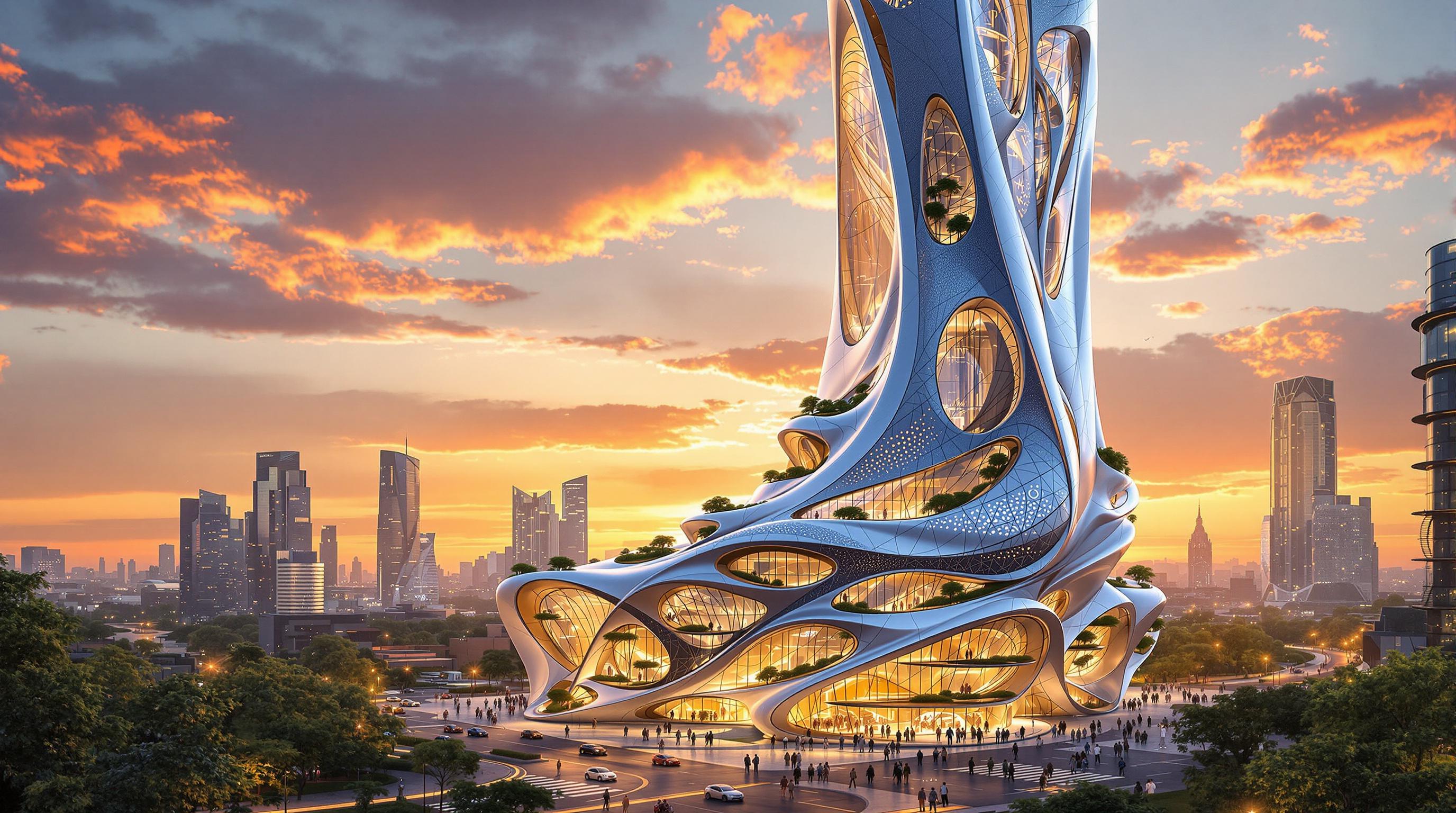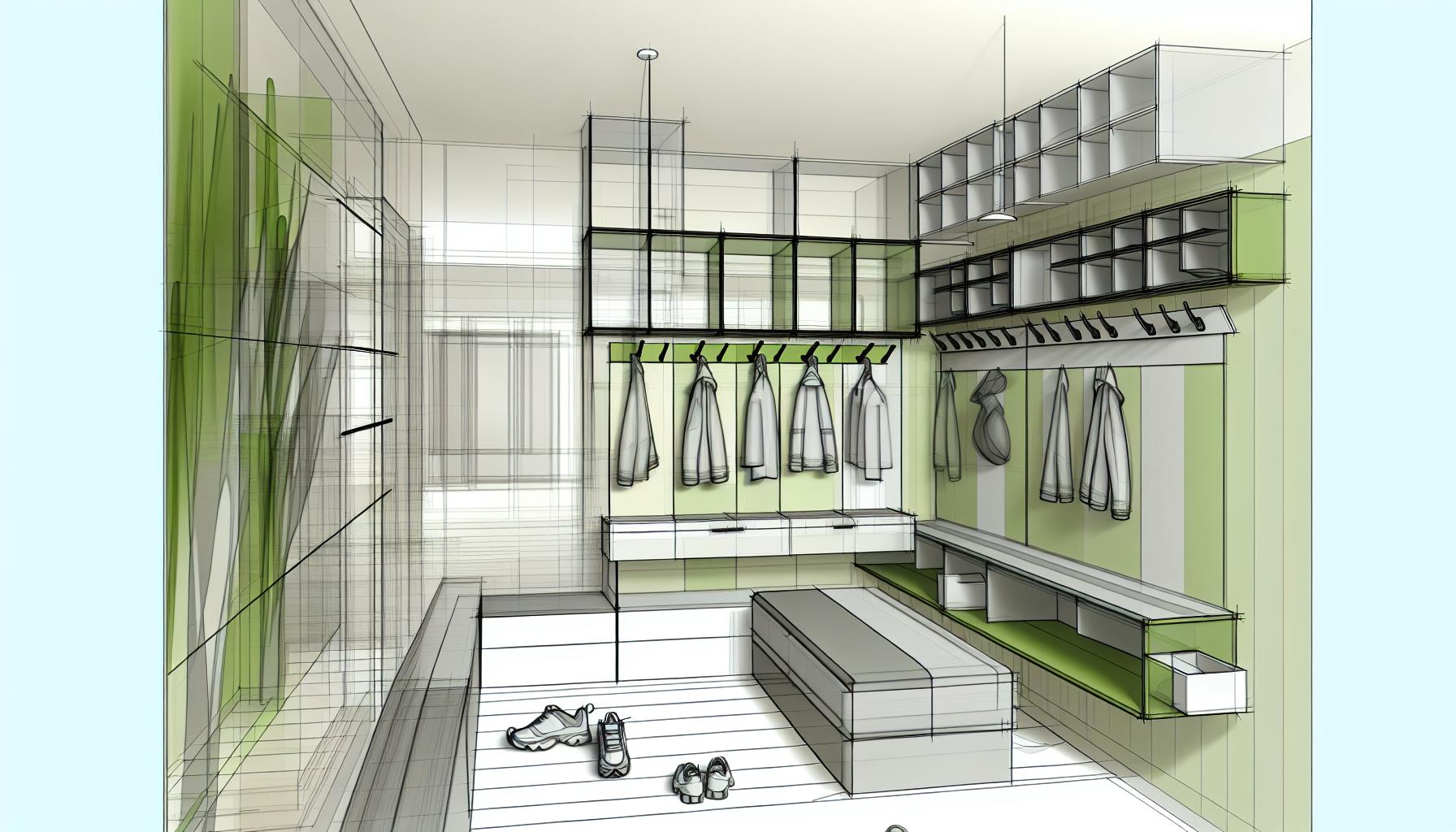Is architecture art? This question sparks debate because architecture combines functionality with aesthetics. Unlike traditional art forms, architecture must meet practical needs like safety and usability while also evoking emotion and beauty. Iconic buildings like the Taj Mahal or the Sydney Opera House show how architecture can balance purpose and artistic vision.
Key Points:
- Overlap with Art: Architecture shares design principles and creativity with art, often influenced by movements like Art Deco or Brutalism.
- Differences: Art focuses on emotional expression, while architecture must also serve practical purposes like shelter and safety.
- Examples of Artistic Architecture: The Parthenon, Taj Mahal, and Zaha Hadid’s designs blur the line between art and structure.
Quick Comparison:
| Aspect | Architecture | Art |
|---|---|---|
| Purpose | Functional spaces with aesthetics | Emotional and creative expression |
| Constraints | Building codes, safety, user needs | Limited by medium and technique |
| Tools | Digital design, construction materials | Paint, clay, digital tools |
| Success Metrics | Usability, durability, beauty | Emotional impact, artistic quality |
Architecture bridges art and utility, shaping spaces that inspire while serving everyday needs. It’s both an art form and a practical craft.
Related video from YouTube
How Architecture and Art Are Connected
Architecture and art are deeply intertwined, sharing design principles, creative processes, and the ability to evoke emotions. However, architecture also brings practicality into the mix, balancing beauty with function.
Art Movements That Shaped Architecture
Art movements have left a lasting mark on architecture throughout history. For instance, Art Nouveau is known for its flowing, organic lines, while Brutalism emphasizes raw materials and bold, unpolished forms. These styles show how trends in art often ripple into the world of architecture.
Art Deco, with its geometric patterns and intricate ornamentation, captured the spirit of the 1920s and 1930s. On the other hand, Postmodernism broke away from rigid conventions, much like it did in painting and sculpture, bringing a playful and eclectic approach to building design.
Design and Creativity in Both Fields
Both architecture and traditional art rely on similar principles of design and creativity. Architects and artists alike focus on composition, form, and visual harmony to create works that resonate with people.
"Architecture is the art and technique of designing and building, as distinguished from the skills associated with construction." - Britannica
Modern tools, like parametric design software, allow architects to push the boundaries of creativity while ensuring functionality. A striking example is the Heydar Aliyev Center by Zaha Hadid, which blends artistic vision with practical design seamlessly.
Buildings That Are Seen as Art
Some structures are celebrated not just as buildings but as works of art. The Parthenon in Greece and the Taj Mahal in India are perfect examples of architecture that achieves both artistic and functional excellence. These landmarks often include additional artistic elements, such as murals and sculptures, further enhancing their visual appeal.
While these examples show architecture can go beyond utility, the question of whether all architecture qualifies as art continues to spark lively debate.
How Architecture and Art Are Similar and Different
Architecture and art share a foundation in creativity and aesthetics, yet they serve different roles in society. While both aim to inspire and evoke meaning, their methods and limitations set them apart.
Purpose: Function vs. Expression
Architecture is a blend of artistic vision and practicality. Unlike art, which often exists purely to evoke emotion or provoke thought, architecture has to meet specific functional needs. Buildings aren't just visual statements - they provide shelter, support daily life, and must adhere to safety standards. In contrast, artists focus on personal or emotional expression without the same practical constraints. This distinction highlights how architects must juggle creativity with real-world demands, creating structures that are both useful and visually appealing.
Balancing Beauty and Usefulness
Modern architecture shows how form and function can coexist. Take the Sydney Opera House, for example. It's a masterpiece of design that merges bold artistic vision with exceptional acoustics and functional performance spaces. Thanks to digital tools, architects can explore daring designs while ensuring practicality. However, the challenge remains: how to maintain this balance between imagination and usability.
Comparison Table
| Aspect | Architecture | Art |
|---|---|---|
| Primary Purpose | Creating functional spaces with aesthetic value | Emotional expression and creative impact |
| Constraints | Building codes, safety standards, user needs | Limited mainly by medium and technique |
| Tools | Digital design software, construction materials | Paint, clay, digital tools, other mediums |
| Success Metrics | Functionality, durability, beauty, user satisfaction | Emotional connection, artistic quality |
| Collaboration | Involves teams of engineers, designers, contractors | Often individual or small group efforts |
Today, the line between art and architecture is becoming less defined. These overlaps spark ongoing debates about whether architecture should be considered a form of art or something entirely distinct.
sbb-itb-1be9014
Different Opinions About Architecture as Art
The question of whether architecture qualifies as an art form continues to stir lively debates among professionals and critics. Some highlight its creative essence, while others focus on its practical purpose.
"Architecture is the art and technique of designing and building, as distinguished from the skills associated with construction." - Britannica
The Art vs. Function Debate
Architecture is often seen as a refined form of art that influences and reflects cultural identity. The design process involves creativity, an eye for aesthetics, and thoughtful planning. Architects pay close attention to elements like form, light, texture, and the interplay of spaces to craft their designs.
At the same time, architecture has to fulfill practical needs, which separates it from traditional art forms. Unlike a painting or sculpture, which can exist purely for its beauty, buildings must meet functional demands, adhere to safety codes, and address the needs of their users. Factors like budgets and regulatory requirements often place limits on how far architects can push their artistic vision - constraints that painters or sculptors rarely face.
Another difference lies in how architecture is judged. Art is typically evaluated for its beauty and emotional resonance, while architecture must balance aesthetics with functionality. Modern architects are increasingly merging these two aspects, creating designs that are both practical and imaginative. This blend of utility and creativity is a hallmark of contemporary architecture, showing how the field navigates both realms.
This ongoing discussion underscores architecture's distinct role as a discipline that intertwines artistic expression with practical application, shaping our surroundings while influencing our emotions and cultural experiences.
How Architecture Affects Emotions and Inspires
Architecture isn't just about buildings; it's about how spaces make us feel and how we connect with them. Take the Taj Mahal, for example. Its symmetry, glowing white marble, and intricate details leave visitors in awe. This iconic structure shows how architecture can be both a work of art and a practical force that shapes human experience.
How Architecture Shapes Emotions
The design of a space - things like ceiling height, proportions, and natural light - can directly influence how we feel. Materials also play a big role. Natural elements like wood and stone tend to create a sense of warmth and comfort, while glass and steel often give off a sleek, modern vibe. Today’s eco-conscious designs go even further, using nature-inspired approaches to create spaces that feel calming and promote a sense of well-being.
When architecture and art are intentionally combined, the emotional connection becomes even stronger.
Combining Art and Architecture in Special Spaces
When art and architecture come together, the result can be truly transformative. The Parthenon is a classic example of this, blending architectural precision with artistic beauty to create a sense of divine harmony. In more recent times, Art Deco buildings have shown how design can reflect the energy of an era, creating spaces that feel both stylish and uplifting.
What makes these spaces so impactful is their ability to balance artistic vision with practical functionality. They don’t just serve a purpose - they inspire. This balance highlights architecture’s unique role as both an art form and a tool for shaping how we live and feel in the spaces around us.
Conclusion
Architecture is a blend of artistry and practicality, seamlessly merging creative vision with technical know-how to shape the spaces we live in. Often called the "mother of the arts", it showcases how design can be both functional and emotionally impactful.
Its artistic side shines in its ability to stir emotions, create memorable experiences, and honor cultural traditions. By weaving historical and cultural elements into its designs, architecture transforms everyday structures into meaningful expressions - whether through timeless classics or bold modern creations.
At the same time, the field continues to balance creativity with real-world needs. As it shapes our surroundings and influences how we feel within them, architecture demonstrates how technical skill and artistic expression can work together to achieve both beauty and purpose.
Looking ahead, architecture's role as an art form is likely to deepen as designers focus on creating spaces that inspire and resonate on a human level. This fusion of function and meaning secures its place as a true art form.
FAQs
Here are answers to some frequently asked questions about the artistic aspects of architecture:
Can architecture be considered art?
Architecture combines creativity with technical expertise, using engineering to ensure functionality while making aesthetic choices that elevate design. Architects strive to balance structural needs with visual appeal, crafting spaces that are both useful and expressive.
Can architecture be seen as art?
Absolutely. Architecture shapes how we experience the world by creating spaces that go beyond basic utility. Iconic structures like the Parthenon or Taj Mahal stand as cultural landmarks, showcasing how architecture can reflect societal values and artistic imagination.
Can a building be an artwork?
Yes, buildings can be seen as artworks, either through their original design or the cultural significance they acquire over time. They can communicate meaning, evoke emotions, and symbolize cultural moments, as seen in renowned structures that define their eras and societies.


